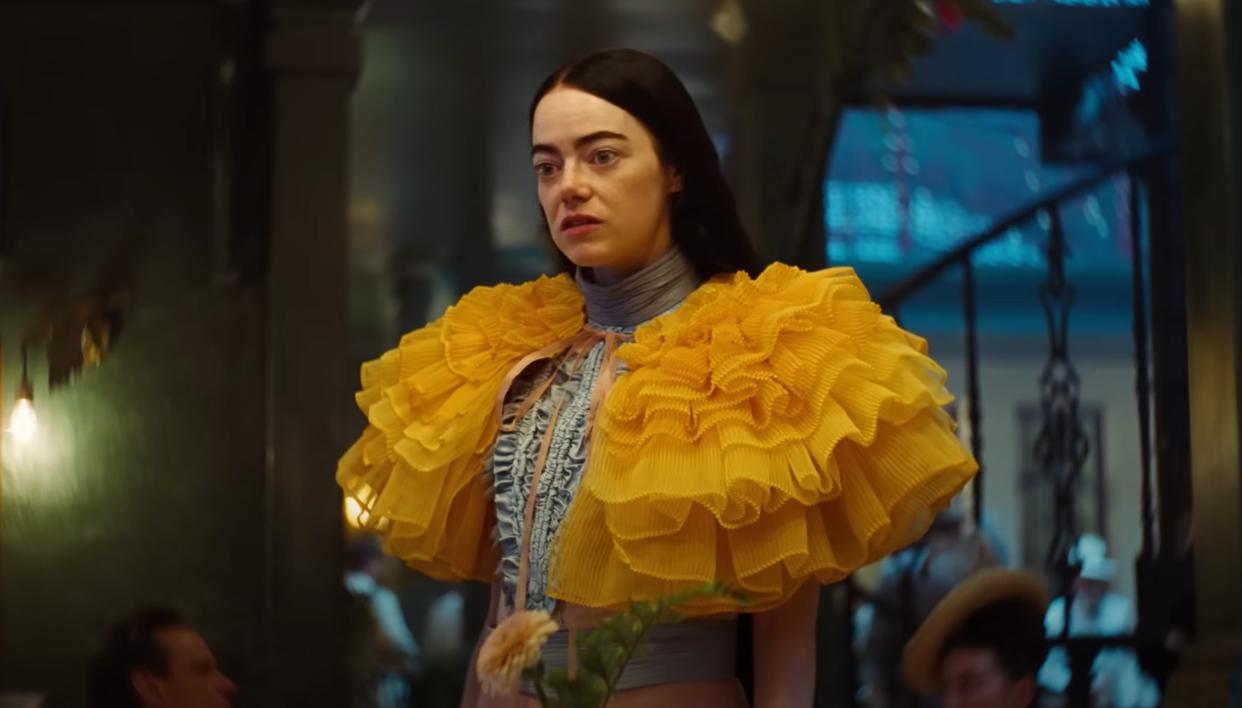2024 Oscars: Best Costume Design Predictions

- Oops!Something went wrong.Please try again later.
- Oops!Something went wrong.Please try again later.
- Oops!Something went wrong.Please try again later.
- Oops!Something went wrong.Please try again later.
- Oops!Something went wrong.Please try again later.
- Oops!Something went wrong.Please try again later.
Nominations voting is from January 11–16, 2024, with official Oscar nominations announced on January 23, 2024. Final voting is February 22–27, 2024. And finally, the 96th Oscars telecast will be broadcast on Sunday, March 10, and air live on ABC at 8 p.m. ET/ 5 p.m. PT. We update predictions throughout awards season, so keep checking IndieWire for all our 2024 Oscar picks.
The State of the Race
Oscar frontrunners “Poor Things” and “Barbie” were both winners at the 26th Costume Designers Guild Awards (held February 21 at NeueHouse). Yargos Lanthimos’ twisted “Frankenstein” gender-bender took the period award, while Greta Gerwig’s billion-dollar blockbuster earned the sci-fi fantasy prize, which still makes it a tight face-off for the costume design Oscar.
More from IndieWire
'Oppenheimer' Wins PGA for Outstanding Producer of Theatrical Motion Pictures (Full List)
Da'Vine Joy Randolph Has No Expectations for the Oscars: 'To Me, I've Already Won'
However, the momentum might be with “Poor Things” after overtaking “Barbie” in costume design at the BAFTAs. Both have stylistic advantages. In “Poor Things” (Searchlight Pictures), Bella (Best Actress nominee Emma Stone) is reanimated with the brain of her unborn child by unconventional scientist Baxter (Willem Dafoe). This results in a surreal journey of transformation and empowerment. The costume design of Holly Waddington (“The Great,” “Lady Macbeth”), therefore, is vital in conveying Bela’s emotional state of mind. The aesthetic begins with the proper silhouette but forgoes intricate patterns for a minimalist look befitting Bella. Yet Waddington explores the use of latex and plastic in her wardrobe as a futuristic embrace. Bella goes from wearing a white silk cape to dressing herself in very unconventional styles, including flamboyant dresses that evoke a blooming flower and bloomers with jacket and hat and military-looking dresses.
Meanwhile, “Barbie” (Warner Bros.) represents a fashion statement as well as an expression of character-building for Barbie’s (Margot Robbie) transformation from doll to human. Gerwig reunites with Oscar-winning costume designer Jacqueline Durran (“Little Women,” “Anna Karenina”), who applied an interpretive design based on the history of Barbie costumes from Mattel spanning 60 years. This had the effect of sparking the memories of anyone who’s ever played with Barbies throughout the decades. It kicks off with the “2001: A Space Odyssey”-inspired monolithic opening, which presents Barbie as the first doll that had agency as a feminist statement. Durran started with the doll fashion pack as a reference point for coordinating outfits and accessories. Pink was dominant, but there were other dazzling colors and color combinations. The swimwear was culled from the ’50s and ’60s retro fits inspired by Brigitte Bardot. Chanel, which designed a pink-suited Barbie in the 2000s, was brought in as a collaborator to help with ’80s period styles.
As far as the other contenders, “Killers of the Flower Moon” (Apple TV+/Paramount) marks the first opportunity for director Martin Scorsese to work with five-time Oscar-nominated costume designer Jacqueline West (“Dune”). She found that his passion for authenticity paired well with her creative process on this historical drama about the Oklahoma serial murders of Osage Indians in the 1920s to steal their oil-rich territory. West worked with several Osage consultants on wardrobes, particularly Julie O’Keefe, and referenced the book “Wedding Clothes and the Osage Community.” The consultants provided West with clothes, photos, and filmed events from the story’s time period. As a result, she utilized many indigenous fabrics, colors, and styles for certain characters throughout the film. For example, Lily Gladstone’s Mollie Burkhart was dressed more traditionally than her sisters early on and subsequently lost the vibrancy of the colors she wore as she lost family members.
Christopher Nolan tapped costume designer Ellen Mirojnick for his “Oppenheimer” (Universal) historical thriller about theoretical physicist J. Robert Oppenheimer (Best Actor nominee Cillian Murphy), and she recreated the iconic look for the “father of the atomic bomb.” Oppenheimer’s silhouette remained constant once he arrived at Berkeley, and his three-piece suits and fedora became his uniform and armor. This was the fashion statement that visually set him apart from the other scientists. By contrast, Mirojnick gave rival Admiral Lewis Strauss’ (Best Supporting Actor nominee Robert Downey Jr.) a dapper look for his black-and-white scenes. Interestingly, this was a reunion for them, as Mirojnick previously dressed Downey as Charlie Chaplin for his “Chaplin” biopic.
Ridley Scott’s “Napoleon” (Apple TV+/Sony Pictures) has Oscar-winning costume designer Janty Yates (“Gladiator”) dressing power couple Napoleon Bonaparte (Phoenix) and Empress Joséphine (Vanessa Kirby) as part of the French fashion revolution. Meanwhile, military costume designer David Crossman meticulously handled the Russians, the Prussians, the Austrians, the British, and the huge selection of French regiments along with some Cossacks and Mamelukes. In all, there were 4,000 military costumes.
Nominees are listed below in order of likelihood they will win.
Contenders
“Poor Things” (Holly Waddington)
“Barbie” (Jacqueline Durran)
“Killers of the Flower Moon” (Jacqueline West)
“Oppenheimer” (Ellen Mirojnick)
“Napoleon” (Janty Yates and David Crossman)
Best of IndieWire
2023 Emmy Predictions: Who Will Win at the Primetime Emmy Awards?
2023 Emmy Predictions: Outstanding Documentary or Nonfiction Special
2023 Emmy Predictions: Outstanding Documentary or Nonfiction Series
Sign up for Indiewire's Newsletter. For the latest news, follow us on Facebook, Twitter, and Instagram.

